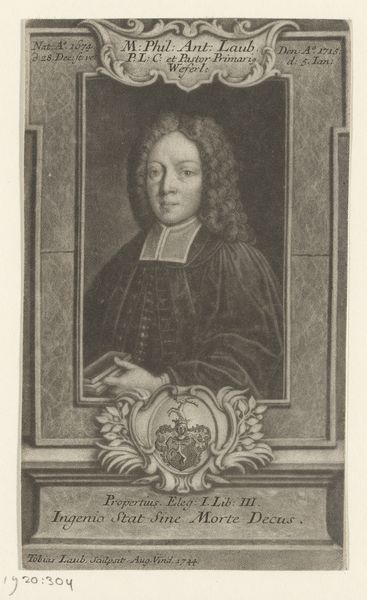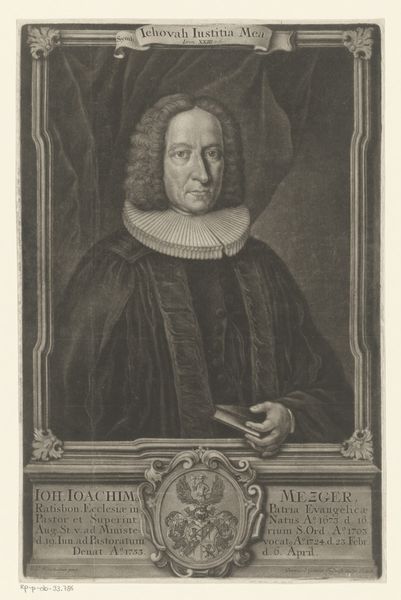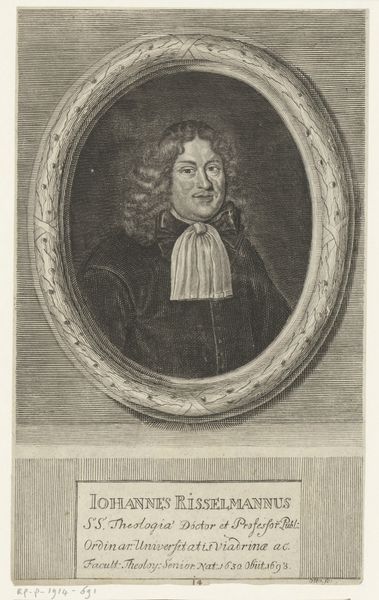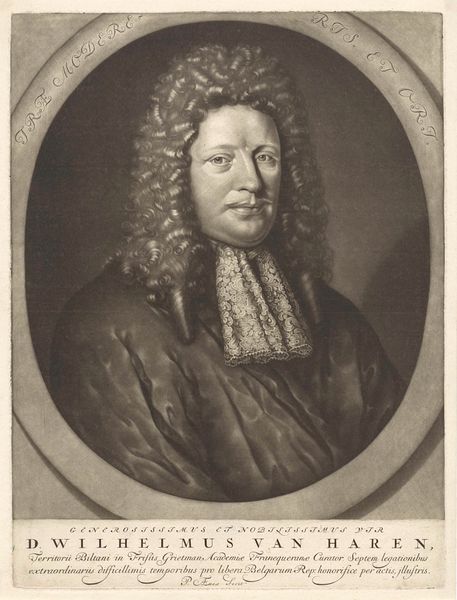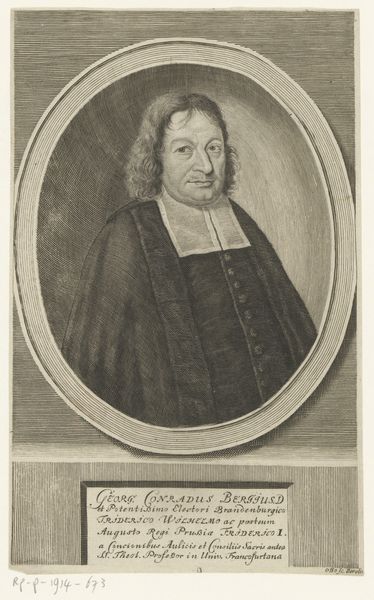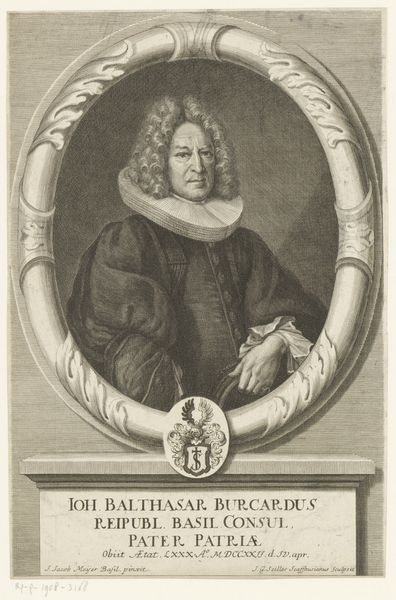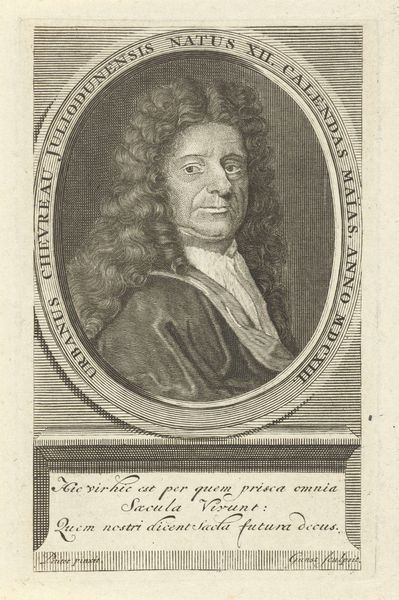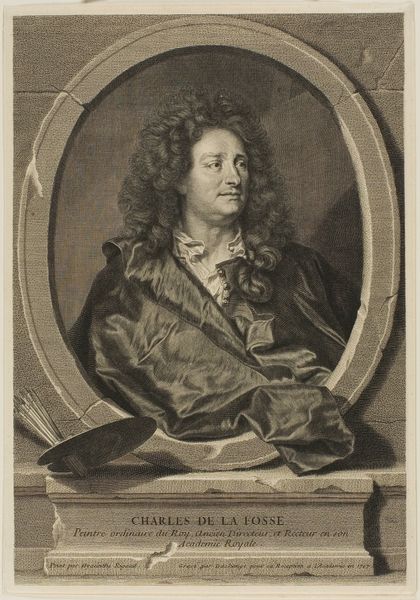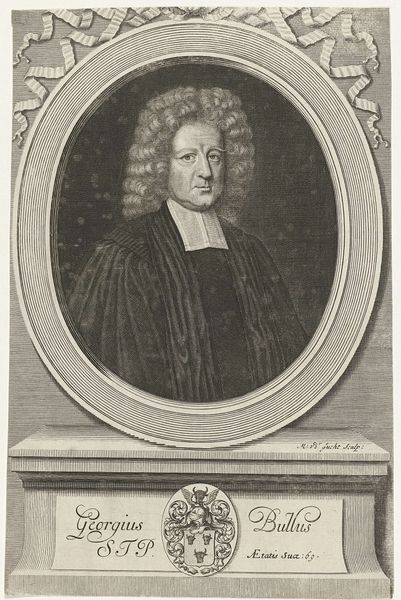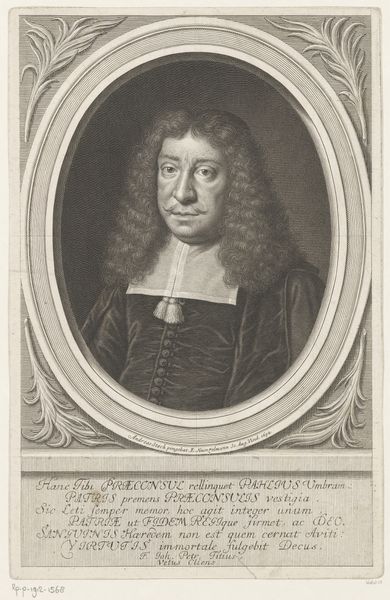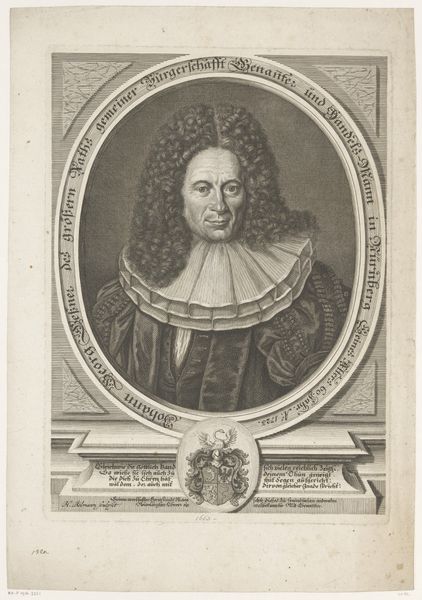
print, engraving
#
baroque
# print
#
old engraving style
#
engraving
Dimensions: height 277 mm, width 167 mm
Copyright: Rijks Museum: Open Domain
Curator: This is a 17th-century engraving titled "Portret van Abraham Andreae." The sitter was a minister as the inscription suggests. Editor: It has a stern but calming presence, doesn't it? The crispness of the lines, especially within that elaborate oval frame, lend a feeling of composure, maybe even inevitability. Curator: Yes, and the way his likeness is rendered contributes greatly. We see this pastor framed within a decorative surround in what’s described as an "old engraving style" executed using engraving as its primary medium. Editor: How do you see that style functioning here? Curator: Observe how the engraver models form with subtle hatching and cross-hatching. These tiny lines build the planes of Andreae’s face and robe to give it depth. Also, see the heavy use of symbolism and decorative motifs; elements very characteristic of Baroque portraiture. It clearly aims to impart a sense of dignity and learnedness. Editor: Interesting. I see the work as projecting social stature through the use of recognizable imagery. Consider how his posture, that unwavering gaze, together communicate authority and a sense of self-assurance linked to the clergy during that period. Curator: Without question, the attire contributes to a symbolic vocabulary; the collar, the sober robe, they signal his vocation immediately. Editor: Moreover, prints such as these circulated widely, affirming societal hierarchies while promoting religious figures and their values. Who was the intended audience? Curator: That’s a fair point. These would have likely been destined for theological colleagues and church members, meant to be appreciated within a well-established social and intellectual context. Editor: Ultimately, though this print embodies classical and established conventions, the power of portraiture is more than surface deep, but entrenched within culture itself. Curator: Precisely. Examining both the visual elements and the cultural context reveals much about the goals and expectations that shape Baroque art.
Comments
No comments
Be the first to comment and join the conversation on the ultimate creative platform.
